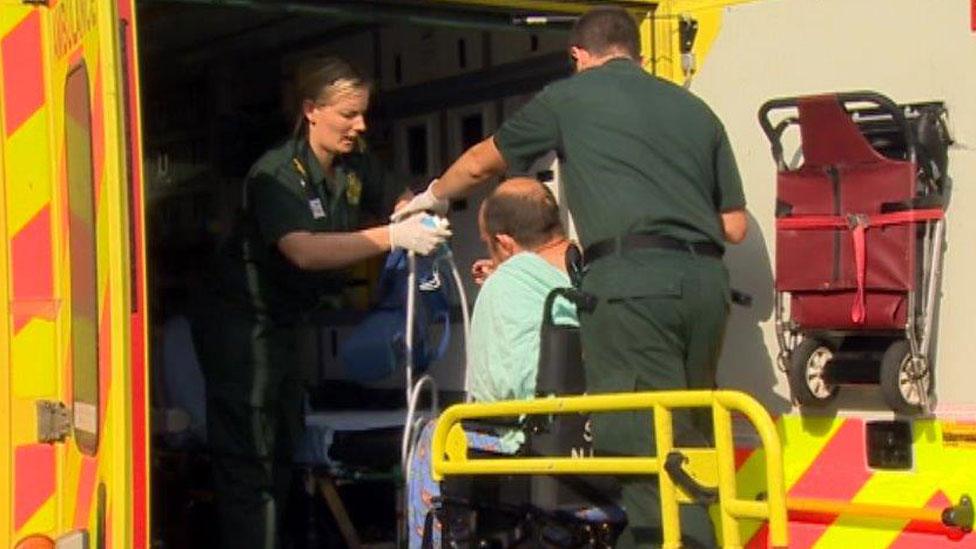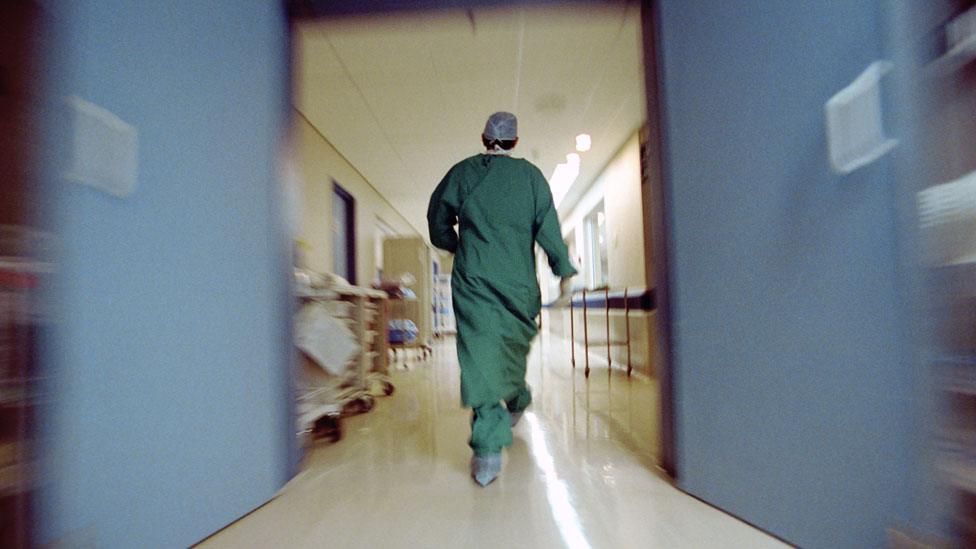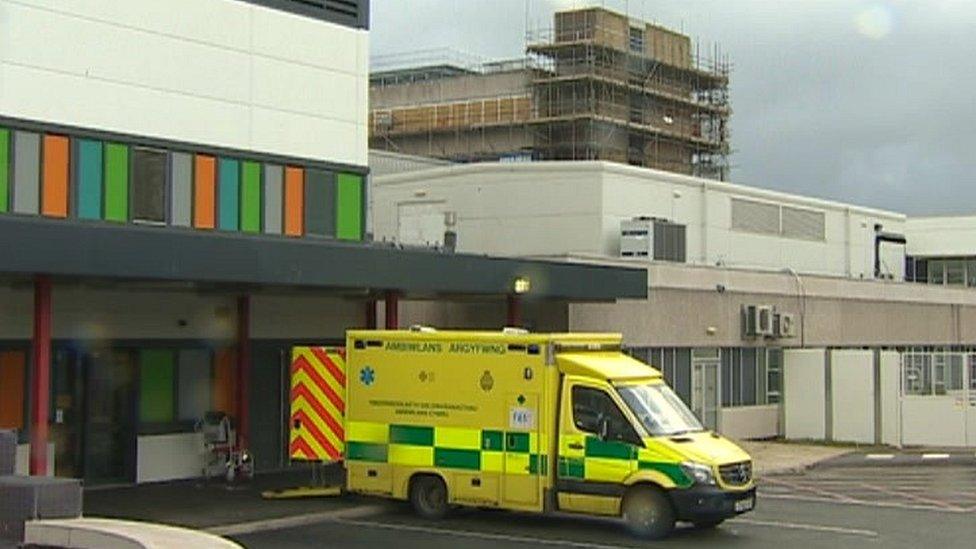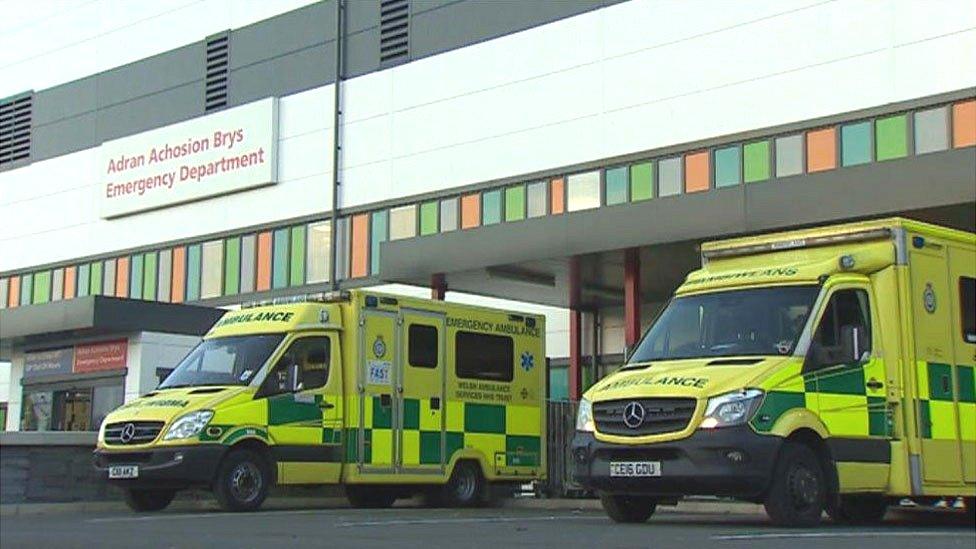Welsh ambulance service hits best response time
- Published

The Welsh ambulance service dealt with 1,778 red calls in April
The performance of the Welsh NHS has improved across a number of areas, the latest statistics have revealed.
The Welsh ambulance service recorded its best performance since new targets came into force in October 2015.
The monthly figures show, external better waiting times in A&E and for patients waiting for planned treatment, diagnostic tests and cancer treatment.
It is not unusual for NHS performance to improve in the spring with an easing of pressures associated with winter.
But the NHS in Wales is still failing to meet most of its key targets.
However, Health Secretary Vaughan Gething said the figures show a positive picture.
"I want to thank NHS staff for their efforts. We will continue to work to improve performance for patients but these statistics paint a very positive picture for Wales."

AMBULANCE
Response times to immediately life-threatening calls improved between March and April. There was a response within eight minutes to 80.5% of red calls in April compared to 77.9% in March.
Performance continues to be above the target of 65%, but far fewer calls now come under the eight-minute target compared before October 2015.
The median response time for red calls was 4 minutes, 17 seconds - compared to five minutes 30 seconds in the same month in 2016. This is also the lowest since the new target began.


ACCIDENT AND EMERGENCY
In April, 82.8% of patients spent less than four hours in emergency care units compared to 80.9% in March. However, the target of 95% has never been met.
Last month, 2,269 patients had to wait over 12 hours in A&E before being admitted, transferred or discharged - 922 fewer than March. But targets state nobody should be waiting that long.
The average wait in A&E has remained fairly steady in recent years - at just over two hours.
PLANNED TREATMENT
In March, 88% of patients waited over 26 weeks for hospital treatment following GP referral. This is slightly worse than the 86.9% in February but lower than the target of 95%.
12,345 patients had been waiting over 36 weeks - 7,000 fewer than February. But the target is nobody should wait that long.
Performance against the 26 and 36 week target has remained fairly stable since early 2016.
DIAGNOSTICS AND THERAPIES
The number of patients waiting over eight weeks for diagnostic tests reduced from 6,625 in February to 4,741 in March - with improving performance since January 2014.
However, there was a slight increase in the number of patients waiting more than 14 weeks for therapies - 2,477 compared to 2,445 - but the long term trend has been fairly static since 2012.

CANCER
89.3% of patients with newly diagnosed cancer started treatment within 62 days in March up 2.5 percentage points from February but is still below the target of 95%. The trend has been improving since Autumn 2016 but fairly stable over the last two years.
97.5% of patients who were receiving treatment, later diagnosed as cancer started specific cancer treatment within 31 days in March. This is up 0.5% from February but is still below the 98% target. The trend has been broadly stable for two years.
- Published20 April 2017

- Published11 May 2017

- Published16 February 2017

- Published30 November 2016
